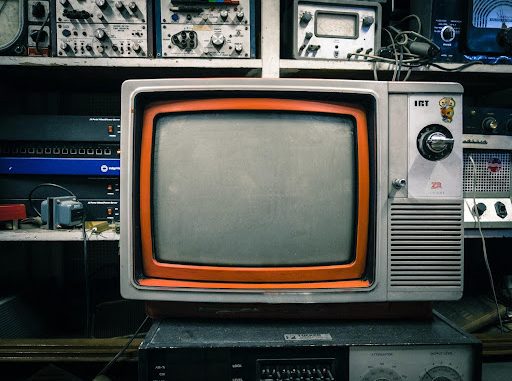
Green screens and virtual sets are not new concepts in the entertainment industry, but recent advancements in technology have made virtual production techniques more accessible and widely adopted. This article will explore the advantages of virtual production techniques and how they have revolutionized the way films, television shows, games, and animations are created. We will delve into the benefits of real-time visualization, cost savings, flexibility, and creativity that virtual sets offer. Additionally, we will examine successful industry applications, discuss challenges and considerations, and offer predictions for the future of virtual production. Virtual production services play a crucial role in enabling these advancements and providing the necessary tools for seamless integration of real actors and sets with virtual elements.
Real-time Visualization and Storytelling
One of the most significant advantages of virtual production techniques is the ability to see virtual environments and sets in real-time during filming. Instead of relying solely on imagination or rough digital mock-ups, directors, actors, and crew members can now see and interact with virtual worlds and objects as they are being filmed. This real-time visualization enhances the immersion for actors and crew, making it easier to react and perform within virtual environments.
Furthermore, virtual production techniques enable a more seamless integration of visual effects (VFX) into live-action shots. The use of green screens and virtual sets eliminates the need for extensive post-production work, allowing VFX artists to create stunning visual effects that interact perfectly with the live-action footage. This real-time visualization enhances storytelling capabilities, immersing the audience in rich and dynamic virtual worlds.
Cost Savings and Efficiency
Traditional physical set constructions can be time-consuming and costly. Virtual production techniques offer a solution by reducing the need for extensive physical set constructions and logistics. With virtual sets, production teams can simply create digital environments that can be modified and reused for multiple scenes or even different projects, resulting in significant cost savings. Additionally, the flexibility of virtual sets allows for faster production timelines since filmmakers are not limited by physical space constraints or weather conditions.
Furthermore, virtual production techniques decrease post-production time significantly. Instead of spending weeks or months in the editing room stitching together footage and adding VFX, virtual sets allow for real-time compositing of live-action footage and virtual elements. This streamlines the entire production process, enabling faster turnarounds and reducing overall production costs.
Flexibility and Creativity
Virtual sets offer unparalleled flexibility and creativity to filmmakers. The ability to easily modify and adjust virtual sets during production allows for quick changes to lighting, camera angles, or even set designs. Filmmakers can experiment with different settings and scenarios by virtually creating and testing various environments to find the ones that best serve the narrative.
Moreover, virtual production techniques provide the freedom for filmmakers to push creative boundaries. Whether it’s recreating historical locations, exotic alien worlds, or larger-than-life fantasy realms, virtual sets unlock infinite possibilities and enable the production of visually stunning projects that were once deemed impossible or financially unfeasible.
Industry Applications and Success Stories
The film and television industry has embraced virtual production techniques, leading to several successful projects. Movies like “Avatar,” directed by James Cameron, revolutionized virtual production with its innovative use of virtual sets and motion-capture technology. Similarly, the live-action adaptation of “The Jungle Book,” directed by Jon Favreau, utilized virtual production techniques along with realistic CGI to create a visually stunning and immersive experience.
Virtual production techniques have also found their way into the gaming and animation industries. In game development, virtual sets enable developers to create realistic environments that players can explore, enhancing immersion and gameplay experiences. In animation, virtual production techniques allow for enhanced realism and more fluid integration of animated characters within virtual environments.
Virtual Reality (VR) and Augmented Reality (AR) also stand to benefit from virtual production techniques. The combination of virtual sets and emerging technologies like VR and AR has the potential to deliver highly immersive experiences where users can interact with virtual worlds and objects in real-time.
Challenges and Considerations
Implementing virtual production techniques comes with its own set of challenges. The upfront costs of acquiring the necessary equipment and software can be substantial, which might be a barrier for smaller production companies or independent filmmakers. Additionally, expertise in virtual production techniques is required to effectively utilize the tools and ensure seamless integration between live-action footage and virtual elements.
Another challenge is the learning curve for industry professionals. Training and education on virtual production tools are necessary to fully grasp the capabilities and potential of virtual sets. Transitioning from traditional production methods to virtual workflows may also require adjustments in production pipelines and crew management.
Conclusion
Virtual production techniques hold tremendous advantages for the entertainment industry, from real-time visualization and storytelling to cost savings and flexibility. The applications of virtual sets in film, television, gaming, animation, and emerging technologies like VR and AR show the immense potential of this innovative approach. Despite the challenges, it is clear that virtual production techniques are here to stay. Industry professionals are encouraged to explore and embrace these techniques to unlock new creative possibilities and revolutionize the way projects are produced.

Leave a Reply